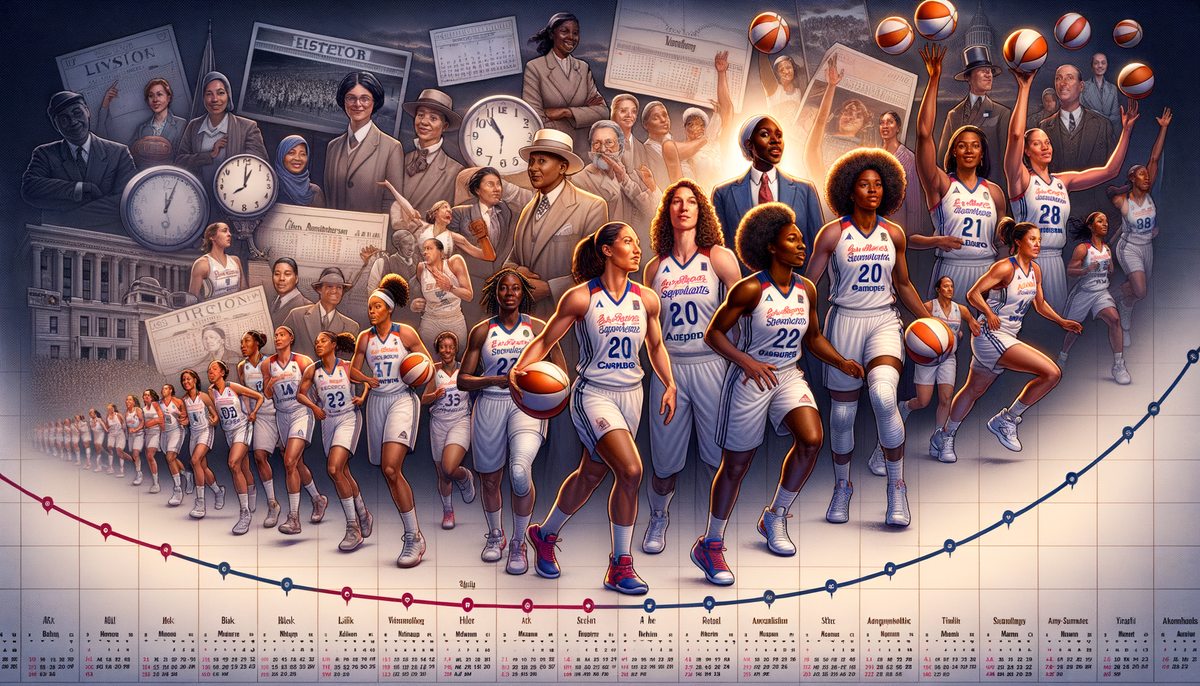WNBA: A Comprehensive Overview
Explore the comprehensive history and development of the WNBA, a leading force in professional women's sports. Discover the league's milestones, challenges, and future outlook amidst the ever-evolving sports landscape.

WNBA: A Comprehensive Overview
The Women's National Basketball Association (WNBA) is a professional basketball league in the United States that has become the most successful American women's professional sports league in history. Established in April 1996 by the National Basketball Association (NBA) Board of Governors, the WNBA began play in 1997 as a women's analogue to the NBA.
League Origins and Structure
The WNBA was created in response to the growing popularity of women's basketball, particularly following the success of the U.S. women's team at the 1996 Summer Olympics. The league originally featured 8 teams in 1997, and through various expansions, contractions, and relocations, will consist of 13 teams as of the 2025 season.
In the early years, each WNBA franchise was located in a city that also hosted an NBA team, often with similar nicknames and uniform colors. The NBA owned all franchises until 2002, when it began allowing sales to ownership groups in cities without NBA teams and to groups unaffiliated with NBA teams in NBA cities.
The league is divided into two divisions of six teams each. This structure has helped establish a stable framework for competition while allowing the league to evolve over time.
Historical Milestones
The history of women's basketball dates back to 1892, just one year after the invention of basketball, though the professional league wouldn't emerge until over a century later. Women's basketball faced many early challenges, including restrictive rules and limited opportunities.
The Houston Comets dominated the early years of the WNBA, winning the first four championships with star players Cynthia Cooper and Sheryl Swoopes. This dynasty helped establish the league's credibility and popularity in its formative years.
A significant milestone came in 1999 with the establishment of a players' union, marking an important step forward for women in professional sports. That same year, the rival American Basketball League dissolved, which helped the WNBA grow in the early 21st century.
Player Conditions and League Development
The WNBA has made significant strides in improving conditions for its players, particularly through collective bargaining agreements. Recent improvements include:
- Increased total player compensation by more than 50%, with star players receiving the largest increases but all players benefiting to some degree.
- Earlier unrestricted free agency, with the "core" designation (similar to the NFL's franchise tag) reduced from four times to three in 2020 and two in 2022.
- Premium economy class air travel for regular-season games and individual hotel rooms for road games.
- Full salary during maternity leave, annual $5,000 childcare stipends, two-bedroom apartments for players with children, facilities for nursing mothers, and family planning benefits up to $60,000 for veteran players.
The league has also implemented rules regarding training camp attendance, with penalties for veteran players who arrive late.
Notable Players and Impact
The WNBA's growth has been fueled by outstanding players who became the league's first superstars, including:
- Cynthia Cooper and Sheryl Swoopes from the Houston Comets dynasty
- Rebecca Lobo, Lisa Leslie, and Lauren Jackson, who helped increase the league's popularity in the early 2000s
These athletes have become important role models, contributing to increased interest in women's basketball at various levels and influencing the landscape of professional sports.
Challenges and Future Outlook
Despite its success, the WNBA has faced challenges throughout its history:
- Financial disparities compared to men's sports
- Competition from other leagues, like the now-defunct American Basketball League
- Salary inequities that have often led top players to supplement their income with overseas play
Nevertheless, the WNBA remains the longest-running women's professional basketball league in the U.S. and continues to make significant contributions to the visibility of women's sports. As the league expands to 13 teams in 2025, it demonstrates ongoing growth and development in creating opportunities for female athletes in professional basketball.
Actionable Insights and Call to Action
For professionals in the WNBA and those involved in women's sports, staying informed about league developments, supporting player initiatives, and advocating for equitable compensation are critical steps toward sustaining growth. Companies with vested interests in women's sports can benefit from partnering with leagues like the WNBA to reach new audiences and promote gender equality in sports.
Want to join the women's basketball revolution? Explore the latest WNBA trends and support the league's talented athletes. Stay updated with our expert insights into the ever-evolving world of professional women's sports.




